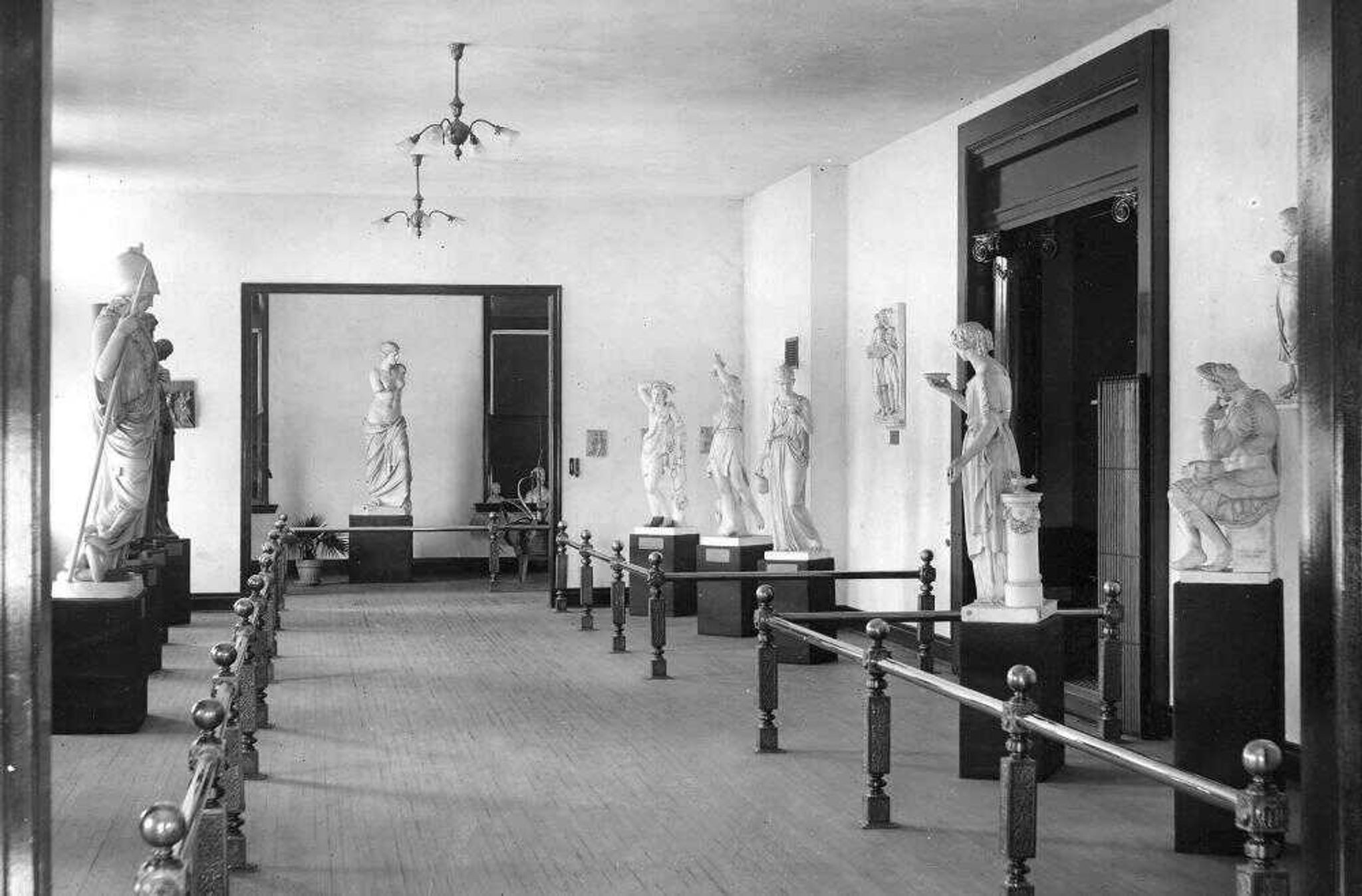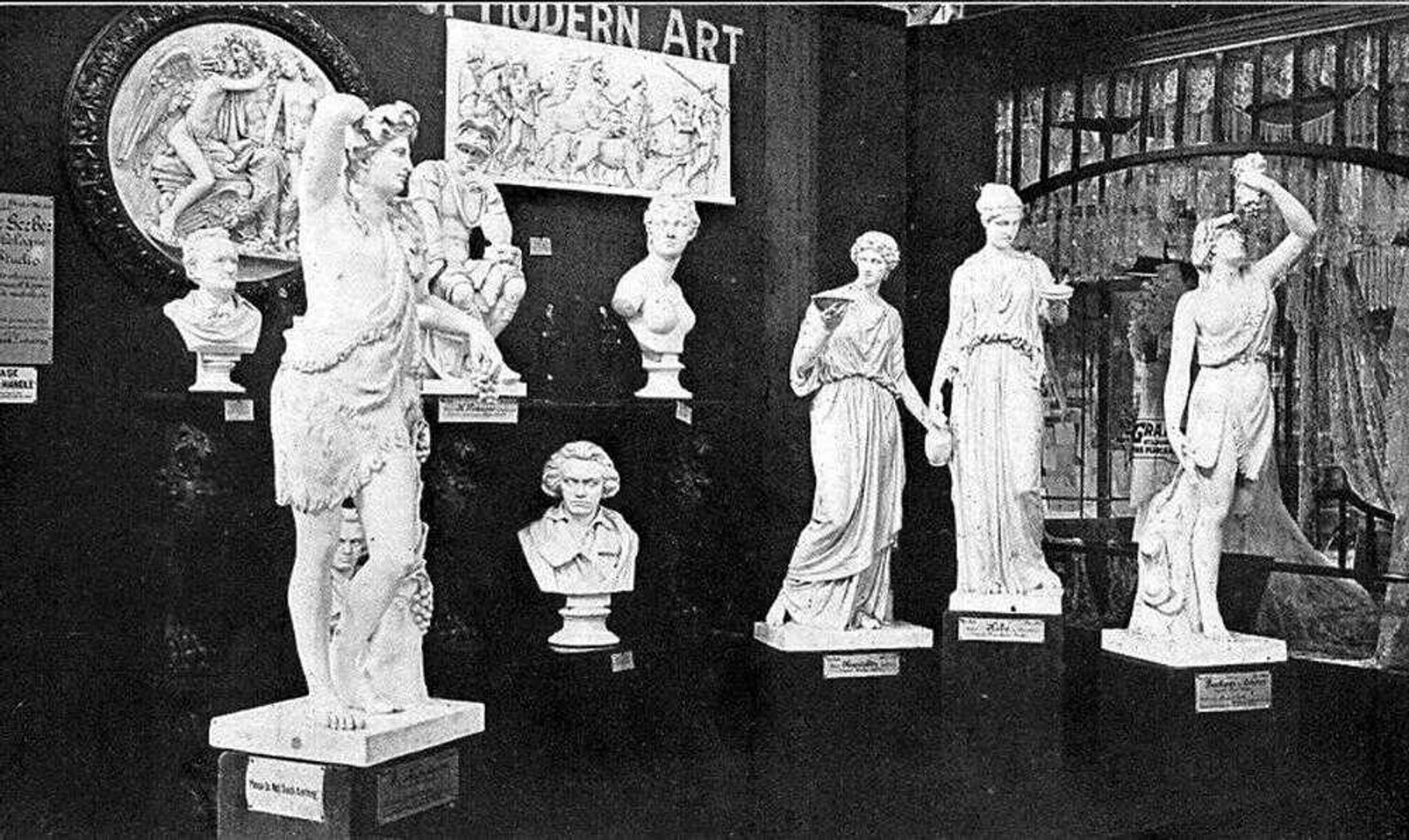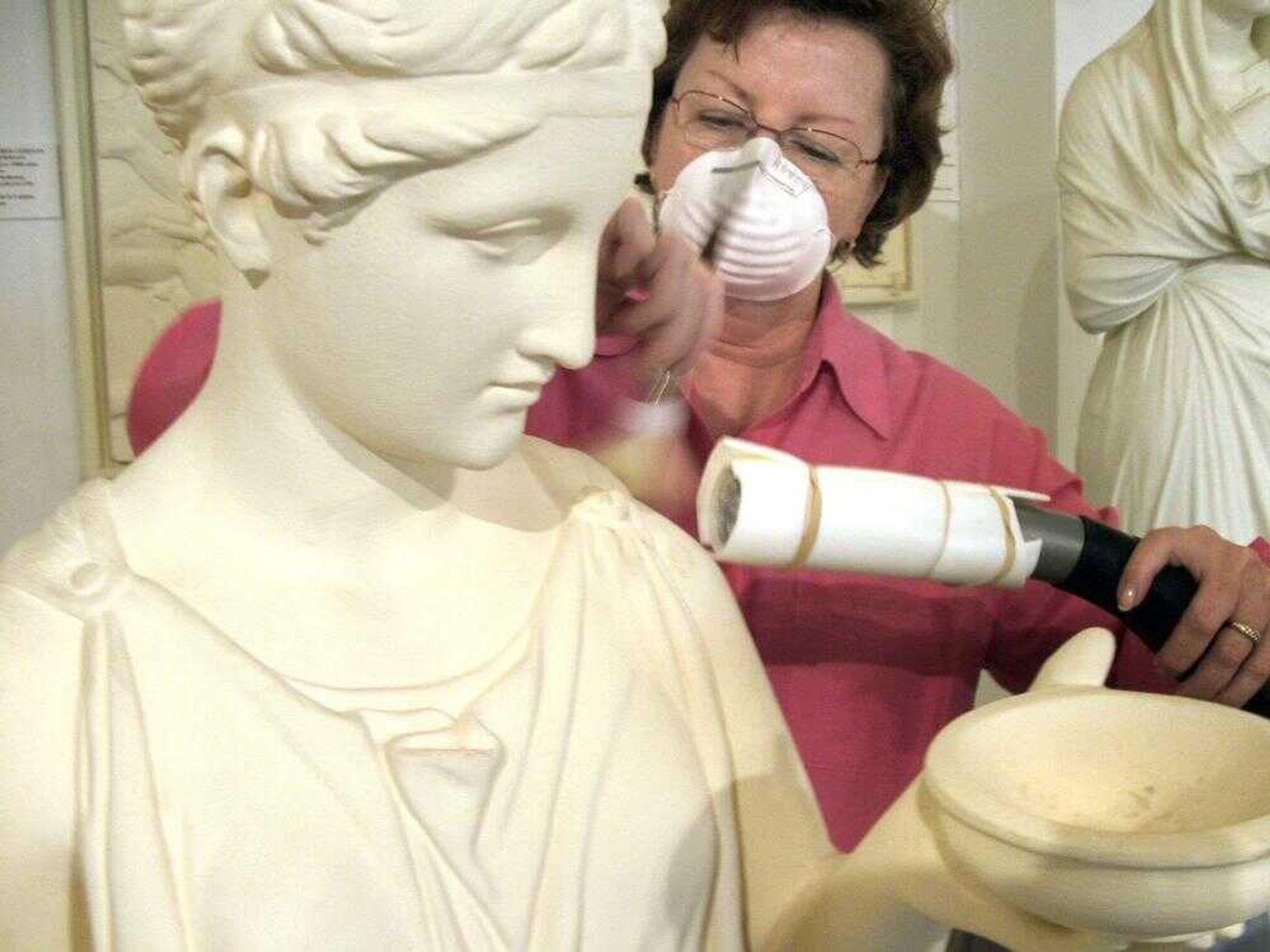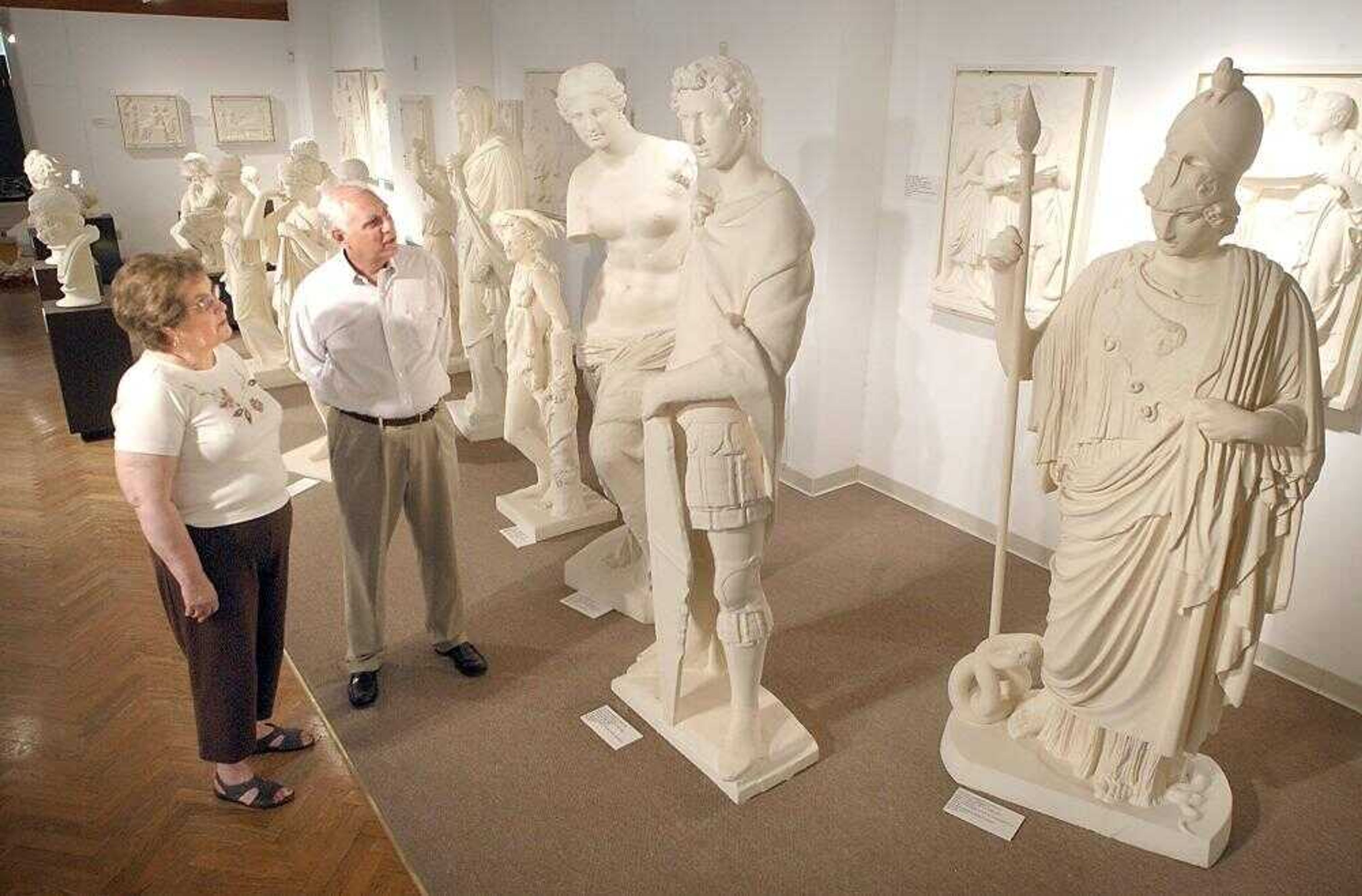Historic statues getting new home
Crowds saw them at the 1904 World's Fair in St. Louis. For the next five decades they quietly graced the main corridor at Southeast Missouri State University's Academic Hall, prompting the name "Statuary Hall." Now, the statues -- plaster replicas of classical sculptures housed in some of the world's finest museums -- will be displayed in the university's new alumni center in the former First Baptist Church on Broadway...
Crowds saw them at the 1904 World's Fair in St. Louis.
For the next five decades they quietly graced the main corridor at Southeast Missouri State University's Academic Hall, prompting the name "Statuary Hall."
Now, the statues -- plaster replicas of classical sculptures housed in some of the world's finest museums -- will be displayed in the university's new alumni center in the former First Baptist Church on Broadway.
Their current prominence is the result of the efforts of university graduates from the class of 1957 to raise $100,000 to have the statues restored and moved from the university museum at Memorial Hall to the new alumni center at 926 Broadway.
The class of 1957 will celebrate its 50th reunion during university homecoming festivities in October. Two alumni, whose donations sparked the project, will be publicly recognized during homecoming. Until then, school officials said, the donors won't be identified.

Dr. Stanley Grand, director of the university museum, said he's glad the statues will be displayed at the alumni center. "To me, they are a very important part of the university's history," he said. "Alumni have always associated these statues with their stay at Southeast."
Jane Stacy, director of alumni services and development, said it's fitting that the statues will be showcased in the new alumni center.
"It is my understanding that when the church was built in 1925, the congregation built it in a Greek Revival style. They felt that if they could not pay for the building, they could sell it to the then-college," she said.
Nine statues will be displayed in the new Aleen Vogel Wehking Alumni Center. They will be placed on pedestals lining the walls of an auditorium being created in the former First Baptist Church's stained-glass sanctuary. The collection will be on permanent display beginning Oct. 19 during homecoming, Grand said.
A tenth statue, a seated figure of 15th-century Italian statesman Lorenzo de Medici, will be displayed in the new university museum at the River Campus as part of an exhibit detailing the history of the school, Grand said.

The 10 statues are part of a collection of 43 plaster sculptures, including busts and reliefs. Most of the pieces depict Roman figures and characters in Greek mythology. At one time, the collection featured 58 sculptures. But over the years, some were damaged and thrown away, according to a newspaper account. Most of the items in the current collection will be placed in storage at Memorial Hall, Grand said.
As a collection, they don't fit in with the River Campus museum's focus on regional history, Grand said. The university also doesn't have room to display them all, he said.
'Wonders of the world'
Most of the items were displayed at the World's Fair in St. Louis. World fairs showcased the world's resources, industries and scientific discoveries.
"This was before television and mass media," he said. "They were the one place you could go and see the wonders of the world," he said.

The plaster statuary was created by August Gerber of Cologne, Germany. Most of the reproductions were installed as part of the German exhibit at the world's fair. The collection won a gold metal at the fair.
Louis Houck, a Cape Girardeau businessman and longtime member of the university's board of regents, purchased the collection for $1,888.25 and donated the pieces to the then Cape Girardeau Normal School.
The "hard and superior finish" on the plaster creations caused U.S. Customs agents to classify them as pottery and not plaster casts, then-school president W.S. Dearmont recalled in a letter in 1905. The statuary was shipped by steamboat down the Mississippi River, unloaded and brought to the college by horse and wagon, Grand said.
In March 1905, Gerber installed the statues in the west end of Academic Hall. The school library was at the other end of the main corridor.
"You had the library at one end and great art on the other end," Grand said. "That makes a statement."
Houck's donation complemented the neoclassical style of Academic Hall, Grand said. Domed Academic Hall replaced the old Normal School building that was destroyed by fire.
Houck wanted a stone-columned, neoclassical building, and Academic Hall symbolized the transition from a Normal School to a college and university, he said.
The statues remained on display at Academic Hall until 1959, when they were dispersed around campus to make room for offices and classrooms. By the early 1970s, the statues were largely neglected.
In 1976, when James Parker was hired to set up the university museum in what was formerly the Memorial Hall ballroom, he began collecting the statues. Some of the sculptures were discovered backstage in Academic Auditorium, in the basement of Kent Library and behind an elevator shaft, Parker recalled in a 1978 article in the Bulletin-Journal newspaper. Damaged pieces were repaired by museum staff.
In September 1978, the statues were put on permanent display in the Memorial Hall museum.
Recently, the university brought in an independent conservator to assess the condition of the statues and advise the museum staff on some repairs that should be made to the plaster casts before they are moved. A Chicago company that specializes in moving museum sculptures will move the statuary, he said.
The larger statues, some 8 to 9 feet tall, weigh as much as 300 pounds each.
mbliss@semissourian.com
335-6611, extension 123
Connect with the Southeast Missourian Newsroom:
For corrections to this story or other insights for the editor, click here. To submit a letter to the editor, click here. To learn about the Southeast Missourian’s AI Policy, click here.










